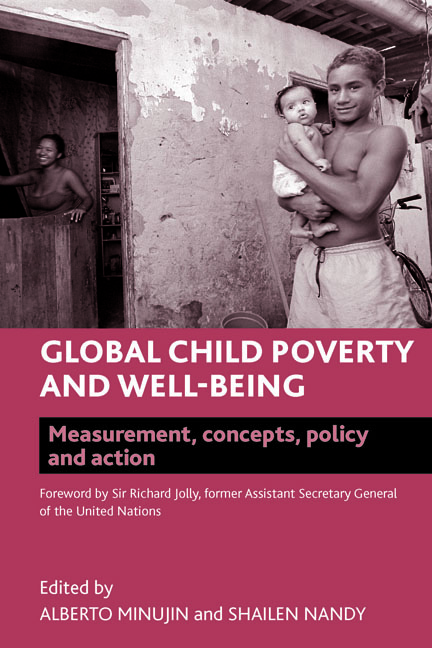six - Defining child poverty in South Africa using the socially perceived necessities approach
Published online by Cambridge University Press: 07 September 2022
Summary
Introduction
Since the advent of democracy in 1994, the South African government has committed itself to protecting child rights and reducing child poverty. For example, the Constitution of the Republic of South Africa has a specific section on child rights, the government ratified both the UN Convention on the Rights of the Child (UNCRC) in 1995 and the African Charter on the Rights and Welfare of the Child in 1999, and new legislation, the Children's Act 2005, gives effect to some of the constitutional rights of children. Social assistance remains the main arm of the government's poverty alleviation programme, and the child support grant is the central mechanism for the alleviation of child poverty. This focus on child poverty sits in the context of a broader government commitment to tackle poverty in the country, a constant theme in the government since 1994, including the ongoing War on Poverty Campaign, commissioned by the Presidency and led by the Deputy President.
When considering poverty or child poverty it is helpful to distinguish between concepts, definitions and measurements. Concepts are ‘the theoretical framework out of which definitions are developed’ (Noble et al, 2007a, p 54), definitions distinguish the poor from the non-poor and measurements are the ways in which the definitions are operationalised, enabling the poor to be identified and counted, and the depth of poverty gauged (Lister, 2004). The focus of this chapter is on the definition process and in particular, the application of the socially perceived necessities approach to the definition of child poverty in South Africa. Several issues arise during the definition process. First, there is the question of who should define poverty: should it be ‘experts’, the general population, poor people or some combination? Second, a decision needs to be made about what to include within the definition, in terms of whether to use monetary resources or living standards or some combination. Third, and related to the second issue, a choice has to be made between a uni- or multidimensional approach. Lastly, a poverty threshold needs to be identified.
Children can be said to be in poverty when their standard of living is unacceptably low and this is because of insufficient resources in the households in which they live.
- Type
- Chapter
- Information
- Global Child Poverty and Well-BeingMeasurement, Concepts, Policy and Action, pp. 135 - 154Publisher: Bristol University PressPrint publication year: 2012



